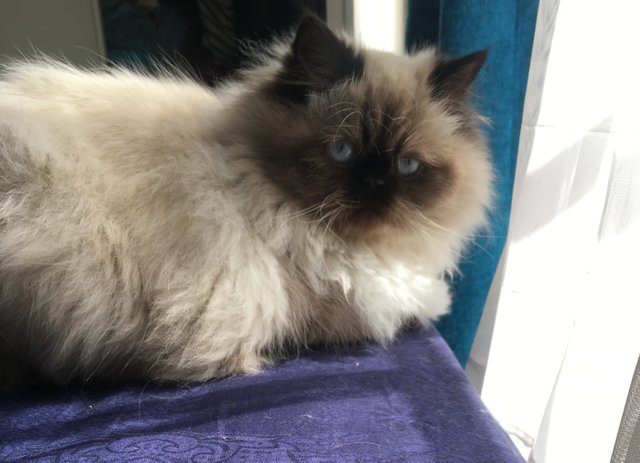how long do cat live?
Environment, maintenance, health, and whether the cat is spayed or neutered — all of these factors matter when thinking about the life expectancy of a cat. Sterilization can be a significant factor. Spaying and neutering removes the risk of developing diseases that can affect a cat’s reproductive system in old age. It has become a truism on the Internet, that, with access to current medical and dietary advancements, the ideal cat “can” or “may” live to 20 years and older. Based on a survey of 10 reputable sites that discuss the average domestic cat, the numbers are more inconsistent, ranging from 10 to 20 years. The average domestic cat lifespan comes out to 15.1 years.
Cat breed is certainly a factor when it comes to lifespan. We could list out the lifespan of each cat breed, but then we’d be here forever. Our research suggests that mixed breed cats are, in general, hardier and live longer than purebred cats. Have a question about a specific breed’s longevity? Please consult the Catster Cat Breed compendium! Here, we’re concerned, like Lord Chesterfield, with “the average cat.” On average, female cats live one to two years longer than male cats. On average, indoor cats live longer than outdoor cats. On average, wild, homeless and feral cats live dramatically shorter lives than domestic cats.
How long do indoor cats live?
All the research we’ve done overwhelmingly suggests that indoor cats live nearly three times as long as outdoor cats. How long do cats live if they’re indoor cats? Indoor cats are typically sterilized, vaccinated and removed from the stresses, risks and dangers of the outside world. They are fed regularly and have easy access to water that is fresh and clean.
They require more attention, more distractions, and must be encouraged to get sufficient exercise to avoid obesity. Fortunately, attentive cat owners provide all of those things. The numbers varied widely among all the sites we visited, ranging from 14 to 20 years. Based on the numbers we chronicled, the average lifespan of an indoor cat is 16.875 years.
Keeping your feline fit and healthy
There are many things you can do to help your feline friend live happily through their golden years.
Observation - your role is essential in noticing small changes to your cat's behaviour or general well being. You can do this by performing a weekly mini-physical examination yourself (if you are unsure about how to do this, ask us next time your cat visits).
Also be on the lookout for changes in water intake, appetite, breathing patterns, coat quality, lumps and bumps, coughing, physical abilities, toileting habits and even grooming habits.
Routine vaccinations
Regular veterinary check-ups including a physical examination (find out more here)
Balanced diet to suit your cat's age
Maintain a healthy weight range
Exercise - regularly engage in moderate playtime
Provide a stress free environment
What happens as a cat ages?
The ageing process is accompanied by many physical and behavioural changes:
The immune system of older cats is less able to fend off foreign invaders.
The skin is thinner and less elastic, has reduced blood circulation, and is more prone to infection.
Older cats groom themselves less effectively than do younger cats, sometimes resulting in hair matting, skin odour, and inflammation.
The claws of ageing felines are often overgrown, thick and brittle and will need to be clipped more often.
Hearing loss is common in cats of advanced age.
Ageing is also accompanied by many changes in the eyes. A slight haziness of the lens is a common age-related change and in most cases does not decrease a cat's vision to any appreciable extent. However, several diseases-especially those associated with high blood pressure can seriously and irreversibly impair a cat's ability to see.
Dental disease is extremely common in older cats and can hinder eating and cause significant pain.
Although many different diseases can cause a loss of appetite, in healthy senior cats, a decreased sense of smell may be partially responsible for a loss of interest in eating. However, the discomfort associated with dental disease is a more likely cause of reluctance to eat.
Feline kidneys undergo a number of age-related changes that may ultimately lead to impaired function; kidney failure is a common disease in older cats, and its signs are extremely varied. Picking up changes in the kidneys early, will provide a better quality of life.
Degenerative joint disease, or arthritis, is common in older cats. Although most arthritic cats don't become overly lame, they may have difficulty gaining access to litter boxes and food and water dishes, particularly if they have to jump or climb stairs to get to them. Cats with arthritis or joint disease may groom less and are less inclined to appreciate a pat over the back or tail area.
Hyperthyroidism (often resulting in over activity); hypertension (high blood pressure); diabetes mellitus; inflammatory bowel disease; and cancer are all examples of conditions that, though sometimes seen in younger cats, become more prevalent in cats as they age.
In humans, ageing changes in the brain contribute to a loss of memory and alterations in personality commonly referred to as senility. Similar signs are seen in elderly cats: wandering, excessive meowing, apparent disorientation, and avoidance of social interaction.

God bless you. https://steemit.com/@biblegateway